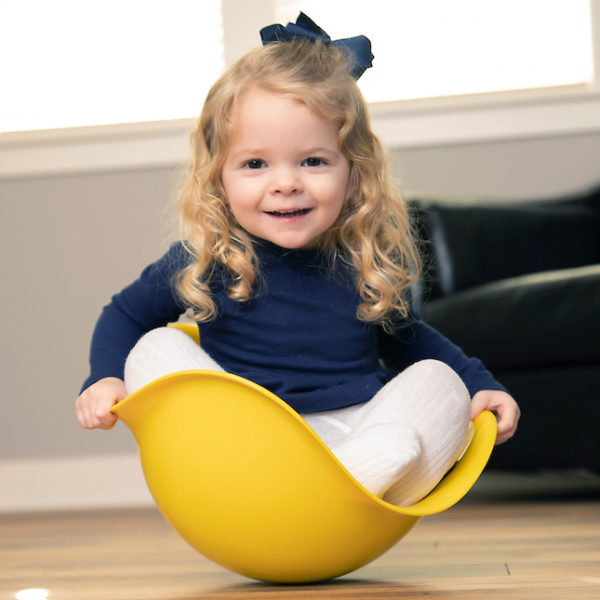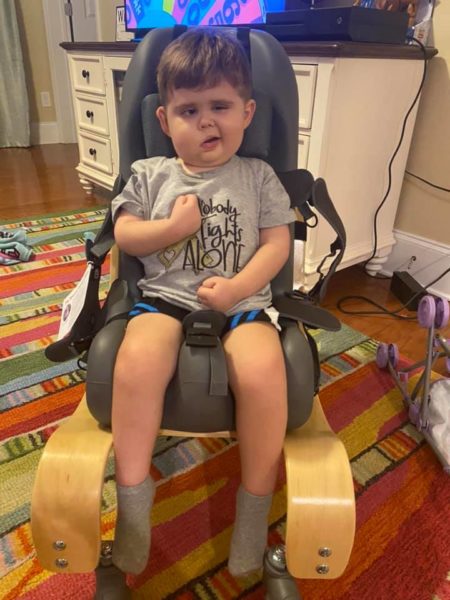
Flexible Seating Options At-Home
Recently it has been noticed that classrooms are offering different types of seating options. Rather than your typical chair and desk kids now have the option to sit on stools, cushions, bean bags, the list goes on!
But why?
Flexible seating options allow children the feeling of having a choice, this of course makes them more willing to complete whatever task is being asked of them. Giving them a sense of empowerment will provide them with a positive attitude knowing they have a choice in where they complete their assignments. Certain options allow for movement, wiggle cushions, balance balls, stools, these all require muscle engagement which in turn keeps the body active and naturally increases the alertness of the child. Flexible seating also encourages collaboration by allowing the children to move around and work together with peers more freely.
As a therapist, I love seeing flexible seating options in the classroom. A lot of the kids I see in the regular education setting sometimes work best when given a unique seating option due to sensory needs, this can be tricky to achieve when every other student sitting in regular chairs, the child typically will not use the provided wiggle cushion or leg band because it makes them look different. With alternative seating becoming more mainstream it’s more accepted by the child who needs that sensory input to be successful in class and the input the other children receive is beneficial as well.
It’s a win win situation!

so what are at-home options?
Whether it’s for virtual learning, homework after school or just daily tasks, alternative seating at home is important to increasing productivity and stimulation. A child will not concentrate or function well sitting at a table for extended periods of time to complete tasks and it’s unfair to expect them to.
general guidelines for flexible seating at home
- Beds are not flexible seating- Don’t do school work or activities in bed, beds are for sleeping and there should be a separation between sleep and work and even sleep and play. Working in bed decreases productivity and in children can disrupt sleep patterns.
- Consider the task- Can it be done outside?
Does it require a screen?
Is the screen eye level?
Are the feet supported?
Does it require both hands?
3. Body positions to help development-
Tummy time is great for all ages, in older children it can help with postural issues and sitting at a desk.
Completing a writing task on a vertical surface which encourages resting the ulnar side of the hand (pinky side) on the surface which a lot of children do not do when writing on a tabletop. You could incorporate standing, sitting on a ball or stool while writing vertically as well.
4. Sensory needs- Does your child prefer enclosed spaces?
Do they require a quiet area?
Do they require movement (bouncing, rocking)?
5. Flexible seating is not “container seating”- Children need movement and weight-bearing positions to encourage muscle development and strength. Container seating is a term used for having a child in a fixed position (in a high chair, sitting in a bumbo, or a bouncer) for an extended amount of time and should be avoided.

body positions
- Sitting with legs straight together
- Sitting with legs straight and apart
- Sitting with legs crossed
- Sitting 90-90-90 (chair position)
- Sitting with knees to chest
- Sitting in a straddle position (like a sitting on a horse)
- Side sitting
- Sitting on feet (low kneeling)
- One leg kneeling
- High kneeling
- Side-lying
- Lying on tummy, propping with forearms
- Lying on tummy, propping on elbows and supporting head
- Lying on back
- Standing with work surface at level of forearms (at 90°)
- Standing with vertical work surface
Note: low kneeling is not “W” sitting. I previously covered “W” sitting and why it should be avoided in an earlier blog.
flexible seating options for home
- Floor
- Sofa
- Dining chair
- Bar stool
- Small chair
- Bench seat
- Chair on wheels
- Pillows
- Bean bag
- Gym ball
- Yoga mat
- Foot stool
- Staircase
- Room corner (where the walls meet in the corner)
- Inside a box, laundry basket, inside a tent, inside the bathtub, inside the sand pit
- Under furniture (eg. under a dining table, under the trampoline)
- Trampoline
- Grass
- Swing

Pictured above is Gifted SGF Kid, Tyson Waid, in the Special Tomato Soft-Touch Sitter with the Special Tomato Sitter Headrest from Adaptive Mall.
specialized options
These will provide physical assistance for children who may have developmental delays, sensory difficulties, or specific physical issues.
- Tumble form seat
- Bilibo
- Wobble chair
- Scooter board
- Pod Swing Chair
- Wobble Cushion
- Inflatable Sensory Pod
- Fidget chair band
Incorporating flexible seating at home is a great way to encourage muscle development, provide sensory input, and provide your child with options to choose from while completing tasks.
Recent Posts
- Play-Doh Themed Birthday Party: A Sensory Friendly Experience April 16, 2024
- Understanding and Supporting Autism: A Guide for Autism Awareness April 15, 2024
- Spring in the Valley 2024: Peace, Love, and SGF March 12, 2024
- SGF’s Impact in 2023: Celebrating A Year of Community Support March 11, 2024
- Celebrate International Women’s Day with Kendra Scott and SGF March 6, 2024
By Ashley Elrod
Ashley Elrod is originally from Rome, Georgia, and currently works in Rome as a full-time Occupational Therapy Assistant in a local school system. She graduated with her degree in 2016 and has worked with children ever since.

